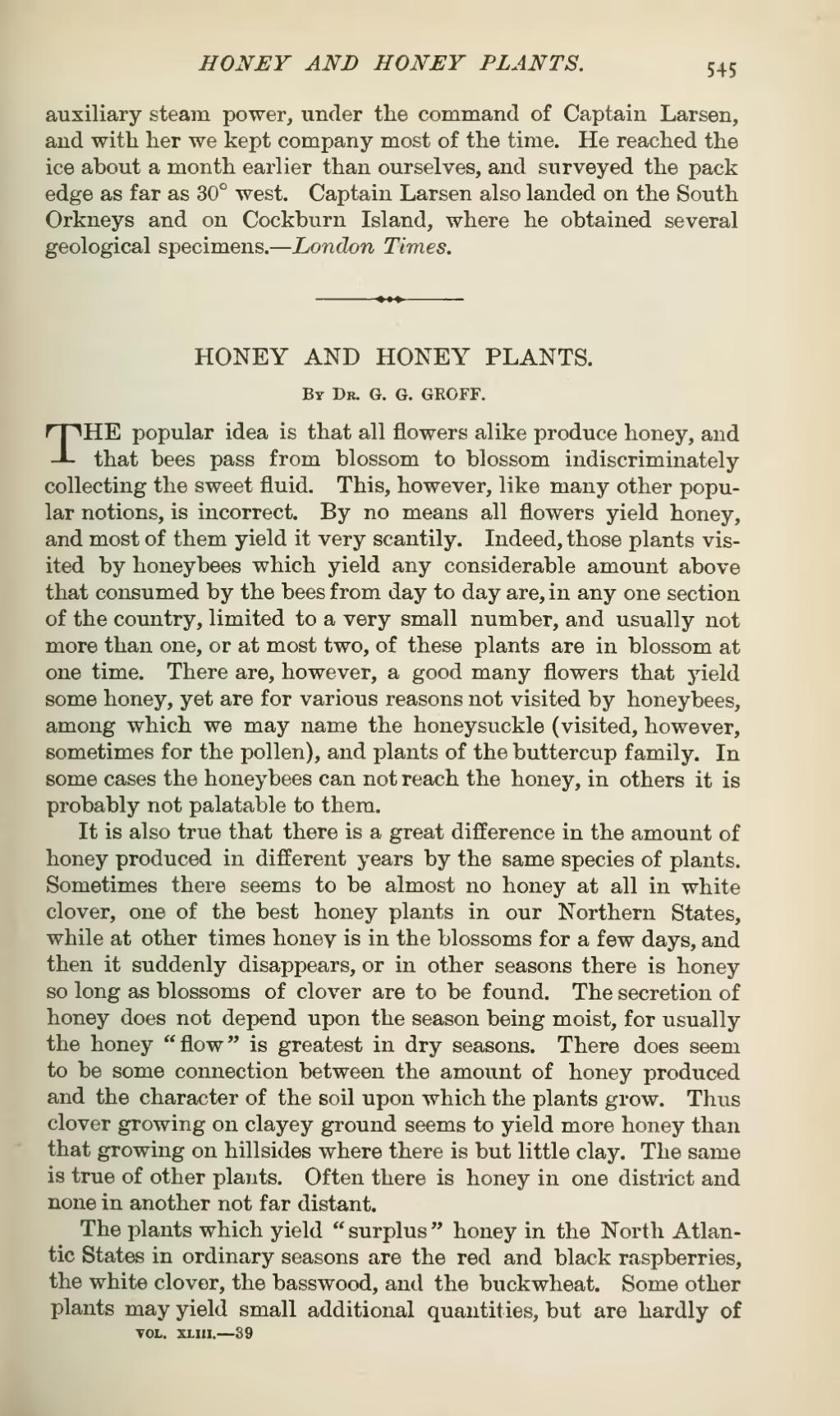auxiliary steam power, under the command of Captain Larsen, and with her we kept company most of the time. He reached the ice about a month earlier than ourselves, and surveyed the pack edge as far as 30° west. Captain Larsen also landed on the South Orkneys and on Cockburn Island, where he obtained several geological specimens.—London Times.
| HONEY AND HONEY PLANTS. |
By Dr. G. G. GROFF.
THE popular idea is that all flowers alike produce honey, and that bees pass from blossom to blossom indiscriminately collecting the sweet fluid. This, however, like many other popular notions, is incorrect. By no means all flowers yield honey, and most of them yield it very scantily. Indeed, those plants visited by honeybees which yield any considerable amount above that consumed by the bees from day to day are, in any one section of the country, limited to a very small number, and usually not more than one, or at most two, of these plants are in blossom at one time. There are, however, a good many flowers that yield some honey, yet are for various reasons not visited by honeybees, among which we may name the honeysuckle (visited, however, sometimes for the pollen), and plants of the buttercup family. In some cases the honeybees can not reach the honey, in others it is probably not palatable to them.
It is also true that there is a great difference in the amount of honey produced in different years by the same species of plants. Sometimes there seems to be almost no honey at all in white clover, one of the best honey plants in our Northern States, while at other times honey is in the blossoms for a few days, and then it suddenly disappears, or in other seasons there is honey so long as blossoms of clover are to be found. The secretion of honey does not depend upon the season being moist, for usually the honey "flow" is greatest in dry seasons. There does seem to be some connection between the amount of honey produced and the character of the soil upon which the plants grow. Thus clover growing on clayey ground seems to yield more honey than that growing on hillsides where there is but little clay. The same is true of other plants. Often there is honey in one district and none in another not far distant.
The plants which yield "surplus" honey in the North Atlantic States in ordinary seasons are the red and black raspberries, the white clover, the basswood, and the buckwheat. Some other plants may yield small additional quantities, but are hardly of
